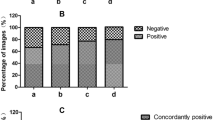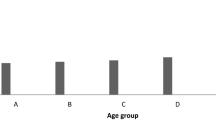Abstract
Purpose
Planar scintigraphy with 123I-radiolabeled metaiodobenzylguanidine (123I-mIBG) is an important imaging modality to evaluate neuroblastoma. In recent years, Single Photon Emission Computed Tomography combined with Computed Tomography (SPECT/CT) has revolutionized nuclear medicine. Nevertheless, the addition of the CT has increased the patients' irradiation. We aimed to evaluate the incremental benefits of 123I-mIBG SPECT/CT over conventional planar imaging and to estimate the relative increase of radiation dose.
Methods
We retrospectively evaluated the added value of 56 SPECT/CT performed in 40 children in terms of better characterization of the lesion and its locoregional extension, better lymph node staging, detection of new lesions, and elimination of false positives by a paired comparison between the planar images and the SPECT/CT ones. Then, we calculated the percentage contribution of the additional radiation of the CT in this hybrid imagery.
Results
In 88% (49 out of 56) of the examinations, SPECT/CT provided additional information, which was crucial in 20% of the cases. It allowed a better characterization of the lesion and its locoregional extension in 44 cases, a better lymph node staging in 28 cases, the detection of 33 new lesions, and the elimination of 9 false positives. The CT effective dose was significantly lower than the SPECT one. The average additional radiation exposure due to CT was 12% (4–23%).
Conclusion
123I-mIBG SPECT/CT has an undeniable added value that improves planar imaging interpretation and impacts patient management. These potential benefits would justify the low additional radiation induced by the CT.

Similar content being viewed by others
Data Availability
Data sharing not applicable to this article as no datasets were generated or analyzed during the current study.
References
Heck JE, Ritz B, Hung RJ, Hashibe M, Boffetta P. The epidemiology of neuroblastoma: a review. Paediatr Perinat Epidemiol. 2009;23:125–43.
Cohn SL, Pearson ADJ, London WB, Monclair T, Ambros PF, Brodeur GM, et al. The international neuroblastoma risk group (INRG) classification system: an INRG task force report. J Clin Oncol. 2009;27:289–97.
Lonergan GF, Schwab CM, Suarez ES, Carlson CL. From the archives of the AFIP neuroblastoma, ganglioneuroblastoma, and ganglioneuroma: radiologicpathologic correlation. Radiographics. 2002;29:911–34.
Papaioannou G, McHugh K. Neuroblastoma in childhood: review and radiological findings. Cancer Imaging. 2005;5:116–27.
Fukuoka M, Junichi T, Takafumi M, Seigo K. Comparison of diagnostic value of 123I- mIBG and high-dose 131I-mIBG scintigraphy including incremental value of SPECT/CT over planar image in patients with malignant pheochromocytoma/ paraganglioma and neuroblastoma. Clin Nuc Med. 2011;36:1–7.
DuBois SG, Kalika Y, Lukens JN, Brodeur GM, Seeger RC, Atkinson JB, et al. Metastatic sites in stage IV and IVS neuroblastoma correlate with age, tumor biology, and survival. J Pediatr Hematol Oncol. 1999;21:181–9.
Smith MA, Seibel NL, Altekruse SF, Ries LA, Melbert DL, O’Leary M, et al. Outcomes for children and adolescents with cancer: challenges for the twenty-first century. J Clin Oncol. 2010;28:2625–34.
Balwierz W, Wieczorek A, Klekawka T, Garus K, Bolek-Marzec K, Perek D, et al. Treatment results of children with neuroblastoma:report of Polish Pediatric Solid Tumor Group. Przegl Lek. 2010;67:387–92.
Perwein T, Lackner H, Sovinz P, Benesch M, Schmidt S, Schwinger W, et al. Survival and late effects in children with stage 4 neuroblastoma. Pediatr Blood Cancer. 2011;57:629–35.
Boubaker A, Bischof DA. Nuclear medicine procedures and neuroblastoma in childhood Their value in the diagnosis, staging and assessment of response to therapy. Q J Nucl Med. 2003;47:31–40.
Brisse HJ, McCarville MB, Granata C, Krug KB, Wootton-Gorges SL, Kanegawa K, et al. Guidelines for imaging and staging of neuroblastic tumors: consensus report from the international neuroblastome risk group project. Radiology. 2011;261:243–57.
Bombardieri E, Giammarile F, Aktolun C, Baum RP, Bischof Delaloye A, Maffoli L, et al. 131I/123I-metaiodobenzylguanidine (mIBG) scintigraphy: procedure guidelines for tumour imaging. Eur J Nucl Med Mol Imaging. 2010;37:2436–46.
Melzer HI, Coppenrath E, Schmid I, Albert MH, von Schweinitz D, Tudball C, et al. 123I-MIBG scintigraphy/SPECT versus 18F-FDG PET in paediatric neuroblastoma. Eur J Nucl Med Mol Imaging. 2011;38:1648–58.
Jaques S, Tobes MC, Sisson JC. Sodium dependency of uptake of norepinephrine and miodobenzylguanidine into cultured human pheochromocytoma cells: evidence for uptake-one. Cancer Res. 1987;47:3920–8.
Gasnier B, Roisin MP, Scherman D, Coornaert S, Desplanches G, Henry JP. Uptake of metaiodobenzylguanidine by bovine chromaffin granule membranes. Mol Pharmacol. 1986;29:275–80.
Park JR, Eggert A, Caron H. Neuroblastoma: biology, prognosis, and treatment. Hematol Oncol Clin North Am. 2010;24:65–86.
Vik TA, Puger T, Kadota R, Castel V, Tulchinsky M, Farto JCA, et al. 123I-mIBG scintigraphy in patients with known or suspected neuroblastoma: results from a prospective multicentertrial. Pediatr Blood Cancer. 2009;52:784–90.
Gelfand MJ, Elgazzar AH, Kriss VM, Masters PR, Golsch GJ. Iodine-123-MIBG SPECT versus planar imaging in children with neural crest tumors. J Nucl Med. 1994;35:1753–7.
Franzius C, Hermann K, Weckesser M, Kopka K, Juergens KU, Vormoor J, et al. Whole- body PET/CT with 11C-metahydroxyephedrine in tumors of the sympathetic nervous system: feasibility study and comparison with 123I-MIBG SPECT/CT. J Nucl Med. 2006;47:1635–42.
Rozovsky K, Koplewitz BZ, Krausz Y, Revel-Vilk S, Weintraub M, Chisin R, et al. Added value of SPECT/CT for correlation of MIBG scintigraphy and diagnostic CT in neuroblastoma and pheochromocytoma. Am J Roentgenol. 2008;190:1085–90.
Bar-Sever Z, Biassoni L, Shulkin B, Kong G, Hofman MS, Lopci E, et al. Guidelines on nuclear medicine imaging in neuroblastoma. Eur J Nucl Med Mol Imaging. 2018;45:2009–24.
Montes C, Tamayo P, Hernandez J, Gomez-Caminero F, Garcia S, Martin C, et al. Estimation of the total effective dose from low-dose CT scans and radiopharmaceutical administrations delivered to patients undergoing SPECT/CT explorations. Ann Nucl Med. 2013;27:610–7.
Valentin J. Radiation dose to patients from radiopharmaceuticals:(addendum 2 to ICRP publication 53) ICRP publication 80 approved by the commission in september 1997. Ann ICRP. 1998;28:1.
Jessen KA, Panzer WSP. European guidelines on quality criteria for computed tomography. brussels, belgium: European commission. journal = EUR 16262. 2000.
Meyer-Rochow GY, Schembri GP, Benn DE, SywakMS, Delbridge LW, Robinson BG, et al. The utility of metaiodobenzylguanidine single photon emission computed tomography/computed tomography(MIBG SPECT/CT) for the diagnosis of pheochromocytoma. Ann Surg Oncol. 2010;17:392–400.
Nadel HR. SPECT/CT in pediatric patient management. Eur J Nucl Med Mol Imaging. 2014;41:104–14.
Liu B, Servaes S, Zhuang H. SPECT/CT mIBG imaging is crucial in the follow-up of the patients with high-risk neuroblastoma. Clin Nucl Med. 2018;43:232–8.
Theerakulpisut D, Raruenrom Y, Wongsurawat N, Somboonporn C. Value of SPECT/CT in diagnostic 131I-mIBG scintigraphy in patients with neuroblastoma. Nucl Med Mol Imaging. 2018;52:350–8.
Shahrokhi P, Emami-Ardekani A, Harsini S, Eftekhari M, Fard-Esfahani A, Fallahi B, et al. 68Ga-DOTATATE PET/CT compared with 131I-MIBG SPECT/CT in the evaluation of neural crest tumors. Asia Ocean J Nucl Med Biol. 2020;8:8–17.
Sharp SE, Trout AT, Weiss BD, Gelfand MJ. MIBG in neuroblastoma diagnostic imaging and therapy. Radiographics. 2016;36:258–78.
Rottenburger C, Juettner E, Harttrampf AC, Hentschel M, Kontny U, Roessler J. False- positive radio-iodinated metaiodobenzylguanidine (123I-MIBG) accumulation in a mast cell infiltrated infantile haemangioma. Br J Radiol. 2010;83:e168–71.
Frappaz D, Giammarile F, Thiesse P, Ranchere-Vince D, Louis D, Guilbaud L, et al. False positive MIBG scan. Med Pediatr Oncol. 1997;29:589–92.
Schindler T, Yu C, Rossleigh M, Pereira J, Cohn R. False positive MIBG uptake in pneumonia in a patient with stage IV neuroblastoma. Clin Nucl Med. 2010;35:743–5.
Acharya J, Chang PT, Gerard P. Abnormal MIBG uptake in a neuroblastoma patient with right upper lobe atelectasis. Pediatr Radiol. 2012;42:1259–62.
Jacobs A, Lenoir P, Delree M, Ramet J, Piepsz A. Unusual Tc-99m MDP and I-123 MIBG images in focal pyelonephritis. Clin Nucl Med. 1990;15:821–4.
Bonnin F, Lumbroso J, Tenenbaum F, Hartmann O, Parmentier C. Refining interpretation of MIBG scans in children. J Nucl Med. 1994;35:803–10.
Piccardo A, Morana G, Puntoni M, Campora S, Sorrentino S, Zucchetta P, et al. Diagnosis, treatment response, and prognosis: the role of 18F-DOPA PET/CT in children affected by neuroblastoma in comparison with 123I-mIBG scan: the first prospective study. J Nucl Med. 2020;61:367–74.
Law M, Ma WH, Leung R, Li S, Wong KK, Ho WY, et al. Evaluation of patient effective dose from sentinel lymph node lymphoscintigraphy in breast cancer: a phantom study with SPECT/CT and ICRP-103 recommendations. Eur J Radiol. 2012;81:e717–20.
Larkin AM, Serulle Y, Wagner S, Noz ME, Friedman K. Quantifying the increase in radiation exposure associated with SPECT/CT compared to SPECT alone for routine nuclear medicine examinations. Int J Mol Imaging. 2011;2011:897202–6.
Sharma P, Sharma S, Ballal S, Chandrasekhar B, Arun M, Rakesh K. SPECT/CT in routine clinical practice: increase in patient radiation dose compared with SPECT alone. Nucl Med Commun. 2012;33:926–32.
Quinn B, Dauer Z, Pandit-Taskar N, Schoder H, Dauer LT. Radiation dosimetry of 18F-FDG PET/CT: incorporating exam-specific parameters in dose estimates. BMC Med imaging. 2016;16:41–51.
Khamwan K, Krisanachinda A, Pasawang P. The determination of patient dose from 18F-FDG PET/CT examination. Radiat Prot Dosimetry. 2010;141:50–5.
Paiva F G, do Carmo Santana P, Mourao A P. Evaluation of patient effective dose in a PET/CT test. Appl Radiat Isot. 2019;145:137–41.
Author information
Authors and Affiliations
Contributions
Dorra Ben-Sellem collected the data and wrote the article. Naima Ben-Rejeb did the literature search and analyzed the data.
Corresponding author
Ethics declarations
Ethics Approval
All procedures performed in studies involving human participants were in accordance with the ethical standards of the institutional and national research committee and with the Helsinki declaration as revised in 2013 and its later amendments or comparable ethical standards.
Informed Consent
It is a retrospective study that was approved by the hospital ethics committee and that did not require informed consent from patients.
Competing Interests
Dorra Ben-Sellem and Naima Ben-Rejeb declare no competing interests.
Additional information
Publisher's Note
Springer Nature remains neutral with regard to jurisdictional claims in published maps and institutional affiliations.
Rights and permissions
About this article
Cite this article
Ben-Sellem, D., Ben-Rejeb, N. Does the Incremental Value of 123I-Metaiodobenzylguanidine SPECT/CT over Planar Imaging Justify the Increase in Radiation Exposure?. Nucl Med Mol Imaging 55, 173–180 (2021). https://doi.org/10.1007/s13139-021-00707-5
Received:
Revised:
Accepted:
Published:
Issue Date:
DOI: https://doi.org/10.1007/s13139-021-00707-5




